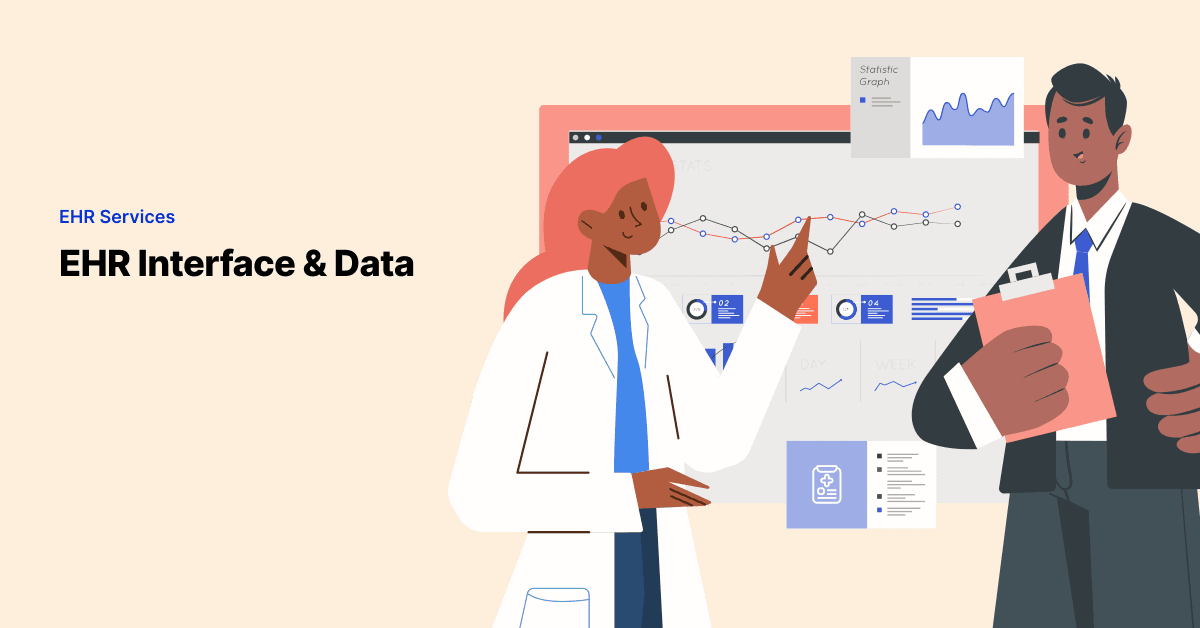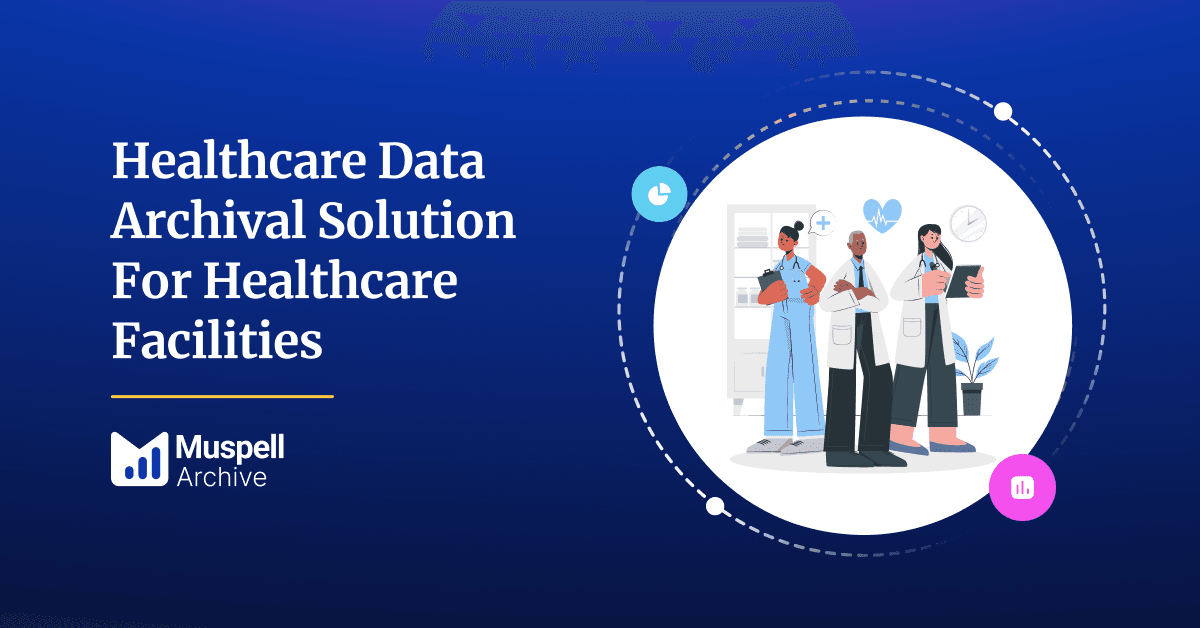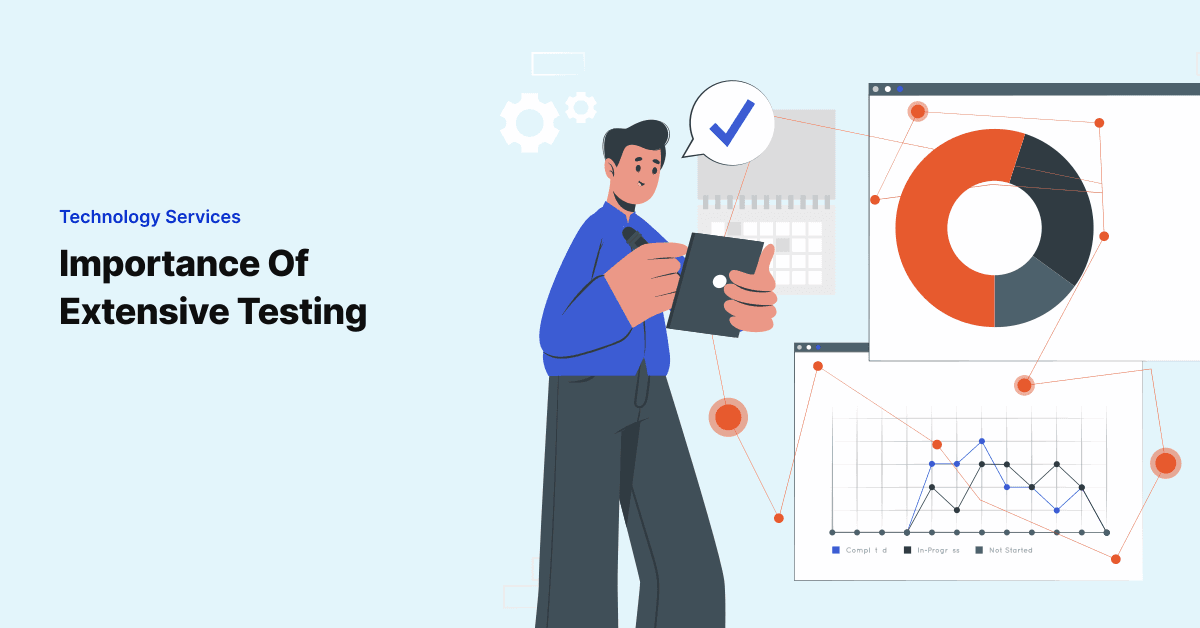
EHR Interfaces: Pursuing More than Data for Datas Sake
The challenges associated with connecting multiple, disparate EHR systems — be it ancillary provider or …

The healthcare sector is evolving into a competitive arena where the accumulation of Protected Health Information (PHI) by your healthcare facility is crucial for maintaining care continuity. The demand for efficient data archiving solutions has grown significantly, making the selection of the right healthcare data archiving solution a strategic choice that influences patient care, operational efficiency, and the overall prosperity of your healthcare organization.
In this blog post, we provide you a comprehensive account of the essential factors to consider to ensure the accessibility, security, and durability of vital healthcare data using healthcare data archival.
1: Choosing Your Ideal Healthcare Data Archival Solution
2: The Best Practices in Healthcare Data Archiving
3: Assembling Your Best Team for A Healthcare Data Archival Project
4: The Difference Between an Excellent and a Good Archive Vendor
5: Conclusion
Choosing Your Ideal Healthcare Data Archival Solution
Since the release of the Cures Act Final Rule in May 2020, the US healthcare industry has been experiencing a transformative wave driven by patient-centricity and healthcare interoperability. Healthcare organizations generate and accumulate vast amounts of patient information, which is highly valuable both for the healthcare organization and the evolving ecosystem, slowly transitioning into a highly connected network of core medical applications.
The Essentials
Scalability: Electronic Health Records (EHRs), diagnostic imaging data, laboratory reports, or data from medical devices are fundamental to your healthcare facility’s business operations, so. your healthcare data archival solution must effectively serve clinicians, doctors, and patients (through EHR patient portals). A scalable solution guarantees that your archival infrastructure remains robust and responsive to the evolving demands of the healthcare environment.
Interoperability: Healthcare data archiving does more for your healthcare facility than protecting your PHI. It transforms your legacy EHR data into the current industry standard FHIR. Remember that healthcare IT applications' compatibility with the FHIR data standard is now an official mandate from the Department of Health and Human Services (HHS). It emphasizes the need for a solution that is an FHIR-native solution.
Data Security: Access controls, comprehensive audit trails, and encryption protocols record user activity on your application. Every healthcare data archival solution will contain many necessary features safeguarding PHI security. But one that offers your granular visibility over user activity and facilitates regular data audits will be the one to choose. Innovation is the key to excellence, and your choice of healthcare data archiving solution must resonate with that.
The Conveniences
Intuitive Design: The importance of an intuitive design cannot be overstated, as it directly impacts the ease of access and management of critical healthcare information. A well-designed interface aligns with the workflow of healthcare professionals, enabling them to swiftly and effortlessly navigate the archival system. This, in turn, contributes to a more streamlined and effective healthcare environment, where time-sensitive decisions can be made with confidence, unburdened by the constraints of a cumbersome user interface.
Search and Retrieval Capabilities: Advanced search functionalities such as metadata tagging and indexing mechanisms enhance data retrieval precision and speed, fortifying your healthcare facility's efficiency. Whether accessing a patient's medical history in an emergency or retrieving specific diagnostic records for comprehensive care, a solution with robust search and retrieval capabilities is an invaluable asset in efficient healthcare operations.
Ultra Customizability: Your users must be able to adjust layouts, user screens, services and fine-tune settings to match their workflows. Enhanced customizability ensures users enjoy personalized access, permissions, and service area configurations that fit their needs.
The Strategic Advantages
FHIR-native: FHIR is a widely accepted modern standard for representing and exchanging healthcare data. Using a FHIR-native archival solution ensures the archived data is represented in a standardized format, simplifying the exchange and sharing of data with other healthcare systems and organizations, making it directly compliant with regulations such as the Cures Act.
Patient Data Purge: Your ideal archival solution should provide opportunities to automate the patient data purge process. Enabling users to preset criteria to remove patient data in bulk introduces accuracy and shorter lead times in the purge process.
Archival For All Data Types: The solution should be capable of managing and archiving all kinds of data types and workflows, including clinical data, non-clinical data, documents, images, specialty workflows, and legacy record management.
The Workflow Essentials
Patient-centric View: Effortless navigation and instant insights are crucial to usability. Your ideal solution must be easy to use, offering intuitive features like a unified dashboard focusing on patient data. It should make analyzing instant insights effortless and precise.
Asynchronous Release of Information: The ideal solution must offer a flexible and asynchronous Release of Information (ROI) workflow in compliance with the ONC’s 21st Century Cures Act. This feature ensures enhanced access to health information, allowing patients to designate recipients, delivery preferences, and sharing conditions.
Secure EHR-Role-Based Data Access: Data security is paramount. Your ideal health data archival solution should offer granular Role-Based Access Control (RBAC) on both the user and service area levels. This tailored access permissions system ensures data integrity and security.
Data Migration and Portability:Highlight the significance of a solution that facilitates smooth data migration from legacy systems to the new archiving environment. Discuss features that allow healthcare organizations to retain control and access to their data, even if they choose to change archiving solutions in the future.
Related: https://www.314e.com/blog/healthcare-data-archival-strategy/
Crafting Robust Data Retention Policies:
The journey towards effective healthcare data archiving begins with well-defined data retention policies. Explore the intricacies of categorizing and classifying data based on its significance, regulatory requirements, and operational needs. This section emphasizes the importance of collaborating with legal and compliance experts to ensure that your policies align seamlessly with industry regulations. By establishing a robust framework for data retention, healthcare institutions pave the way for compliant, organized, and streamlined data management practices.
Efficient and Cost-Effective Archiving: Maximizing Resources for Optimal Results
Efficiency and cost-effectiveness are at the core of successful healthcare data archiving. Delve into strategies that optimize resources while maintaining the integrity and accessibility of archived data. Discuss the implementation of tiered storage systems, data compression techniques, and automated archival processes to streamline operations. By assembling a multidisciplinary team of IT professionals, financial analysts, and operational strategists, healthcare institutions can strike a balance between the need for efficiency and budget constraints, ensuring a sustainable and cost-effective archiving solution.
Selecting Tailored Archival Solutions: Tips for Success in a Diverse Landscape
Navigating the myriad options in the data archiving landscape requires a strategic approach to solution selection. This section provides actionable tips for decision-makers, emphasizing the importance of aligning the chosen archival solution with specific healthcare needs. Explore considerations such as scalability to accommodate evolving data volumes, interoperability with existing healthcare systems, and robust security features. Engage stakeholders, including IT experts, healthcare administrators, and end-users, in the decision-making process to ensure that the selected solution not only meets current requirements but is also poised to adapt to future challenges and technological advancements.
Data Classification and Retention Policies:
Implement a robust data classification system to categorize healthcare data based on its sensitivity and importance. Establish clear data retention policies that dictate how long each type of data should be archived. Regularly review and update these policies to align with changing regulations and business needs. This helps in optimizing storage space and streamlining the archiving process.
Redundancy and Disaster Recovery:
Establish redundant systems and robust disaster recovery plans to safeguard against data loss due to unforeseen events such as hardware failures, natural disasters, or cyber-attacks. Maintain multiple backup copies of archived data in geographically diverse locations to ensure data availability in case of emergencies. Regularly test and update disaster recovery procedures to guarantee their effectiveness.
Security and Encryption:
Prioritize the security of archived healthcare data by implementing encryption mechanisms. Encrypt data both during transmission and while it is stored to protect it from unauthorized access. Utilize access controls and authentication measures to ensure that only authorized personnel can retrieve or modify archived information. Regularly audit and monitor access logs to detect and respond to any potential security breaches promptly.
Regular Audits and Monitoring:
Conduct regular audits of the healthcare data archiving system to ensure compliance, identify potential vulnerabilities, and monitor access patterns. Implement a robust monitoring system that tracks user activities and system behaviors. Regularly review these logs to detect any anomalies or unauthorized access promptly. Proactive monitoring helps identify and address issues before they escalate, contributing to the overall security and reliability of the healthcare data archiving infrastructure.
The Leader: The project leader is the bridge between your healthcare organization and the archival process overseen by the vendor. The leader possesses a distinctive skill set that blends project management finesse with an in-depth knowledge of healthcare data and technology. Collaborating closely with the vendor, they articulate precise requirements, quality benchmarks, and compliance expectations. Beyond facilitating seamless communication, the project leader plays a crucial role in troubleshooting and risk mitigation. By foreseeing potential obstacles, bottlenecks, or discrepancies at an early stage, they facilitate prompt issue resolution and implement proactive adjustments to maintain the project's trajectory.
The Champion: Consider the champion as the heartbeat of your healthcare data archival initiative. The project champion takes center stage as a dynamic force, often holding a prominent position in the C-Suite. Going beyond conventional project management, their role is multifaceted, encompassing the vital tasks like sustaining enthusiasm, nurturing open communication, and ensuring alignment with the organization's strategic vision.
Functioning as a bridge between the project team and the wider staff, the project champion tackles inquiries, provides regular updates, and elucidates the project's broader impact. Guiding the project's course, they confront challenges head-on, empowering team members to realize their goals. With their leadership vantage point, the project champion not only prioritizes the project's triumph but also adeptly allocates resources and swiftly resolves any potential hurdles in the path to success.
HIM Representation - Involving a Health Information Management (HIM) representative contributes a wealth of knowledge to a health data archival project, especially in navigating the complexities inherent in healthcare data. The individual's proficiency in HIM systems, encompassing electronic health records (EHRs) and other platforms for health data management, facilitates a seamless integration of archival processes into current systems. This position is crucial for ensuring that the archival procedures comply with statutory regulations, thereby safeguarding the confidentiality and security of patient information. A HIM representative plays a key role in defining and aligning data selection criteria with regulatory mandates.
IT Representation - In your healthcare data archival project, IT representation forms a diverse ensemble of professionals, encompassing database engineers, legacy system analysts, system administrators, cloud engineers, and IT support personnel. Their collective proficiency stands as a cornerstone for the triumph of any healthcare data archival project. Database engineers bring forth in-depth insights into data structures and management, ensuring the streamlined storage and retrieval of healthcare data. Meanwhile, the pivotal role of legacy system analysts involves assessing existing systems, pinpointing data sources, and orchestrating their seamless integration into the archival process.
The concerted efforts of system administrators and cloud engineers are instrumental in maintaining the operational fluidity of the archival system, whether it resides on-premises or in the cloud. Simultaneously, the ongoing support and troubleshooting provided by IT support staff play a crucial role in sustaining the project's momentum. It becomes imperative to ensure that the engaged IT skill sets within a healthcare organization are cognizant of their roles, the project timelines, and their overarching significance at an organizational level.
Patient Care Representation - The end-users of Health Information Management (HIM) products, including physicians and nursing clerks directly engaging with patient data, collectively constitute the representation from patient care. Their viewpoint plays a pivotal role in assessing the impact of the archival project on patient care and clinical operations. Physicians heavily rely on accurate and easily accessible patient data to make well-informed decisions, while nursing clerks manage administrative tasks associated with patient records. Both groups have a profound interest in the efficiency and reliability of HIM systems, making their perspectives essential contributors to shaping the archival project.
This representation from Patient Care brings a user-centric lens to the project, emphasizing how data archival influences daily clinical workflows. Their feedback and specific requirements play a crucial role in ensuring that the archival system aligns with the needs of healthcare providers, upholds data integrity, and facilitates seamless access to historical patient information.
Select a Forward-Thinking Vendor: Choosing a vendor with a long-term vision is critical. Opt for a provider capable of offering scalable solutions aligned with your healthcare organization's strategic objectives. Seek vendors experienced in customization to address specific needs and regulatory compliance. Verify that the selected vendor adheres to essential healthcare data regulations to ensure both compliance and data security.
Evaluate Technological Capabilities: Assess the vendor's data discovery and delivery technologies to ensure they are current and equipped to handle the volume and complexity of healthcare data. Establishing a Service Level Agreement (SLA) with the vendor sets performance expectations and service levels, ensuring transparency and accountability. Embrace innovative archiving solutions that enhance efficiency and cost-effectiveness.
Foster Effective Communication:Transparent and open communication with the vendor is essential. Share your organization's archival challenges, data format requirements, and unique needs. A collaborative approach aids the vendor in understanding and effectively addressing concerns. Regular meetings and discussions with the vendor facilitate issue identification and resolution.
Verify Data Security and Privacy Measures: Ensure robust data encryption techniques are implemented to safeguard patient data during both transfer and storage. Collaborate with the vendor to establish clear data retention policies that align with legal and compliance requirements.
Validate Data Retrieval and Accessibility Capabilities: Prior to finalizing the vendor selection, conduct tests to verify that the speed and accessibility of data retrieval meet your organization's requirements. Ensure that your staff is adequately trained in utilizing the vendor's systems to maximize the value of archival services.
Establish Long-term Planning: Discuss data migration strategies with the vendor to ensure seamless transitions to new technologies when necessary. Select a vendor with adaptability to changes and advancements in healthcare technology and data archiving, maintaining the relevance of your archival solutions.
Related: What is the Difference Between an Excellent and a Good Archive Vendor?
Join over 3,200 subscribers and keep up-to-date with the latest innovations & best practices in Healthcare IT.

The challenges associated with connecting multiple, disparate EHR systems — be it ancillary provider or …

With the increased need to provide value-based care, the healthcare industry has seen a significant increase …

One of the biggest shortcomings we’ve seen when it comes to implementing healthcare IT is a lack of good, …